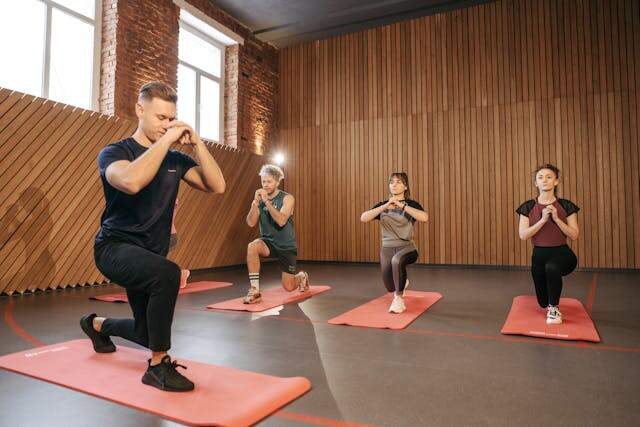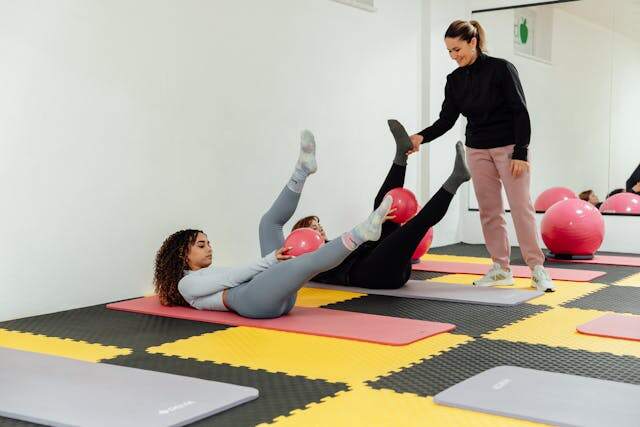Photo by Towfiqu barbhuiya: https://www.pexels.com/photo/a-person-in-gray-shirt-and-blue-denim-jeans-14534511/
Feeling a continuous pain in the knee when you wake up in the morning? Feeling so bad, rigid and rusty on your joints?
Do you know it is all because knee is stiffer than other joints when we are sleeping in a fixed position. Hips and shoulders do have less movement in the sockets compared to the knee.
So do we have a solution for this or will it be permanent until our final day?
Fortunately we do have a solution for this and it is not hard as you think.
The best solution for this is engaging in Exercises and workouts. Below are some exercises you can engage to completely vanish the hard pain you have in the morning.

Photo by Pavel Danilyuk: https://www.pexels.com/photo/people-practicing-yoga-inside-the-studio-6339356/
1. PRONE QUAD STRETCH
Here is an exercise that you can try at home and even in your own bed or sofa if it is convenient.
Here you have to lie on your stomach with your legs straight and then should bend one of your leg with hand and pull one of yor ankle towards the butt to feel a stretch in one of your thighs.
Thereafter, you have to hold it for around 10 seconds and repeat it 3 to 4 times before switching the legs.
2. HAMSTRING STRETCH
This also workable at your own space and very simple.
Here you have to lie on your back first of all and we have to keep the right leg in front of us and have to grab the left leg with both hands behind the thigh with knee bent Ninety Degrees.
Then we have to dynamically kick the left foot up toward the ceiling (i.e. straighten the leg as best you can) and hold for 5 seconds.
There after we have to lower it back down to the starting position.
It is better to repeat it for 3 to 5 times while keeping your hip at about Ninety degrees of hip flexion, then we have to switch legs.

Photo by Ahmet Kurt: https://www.pexels.com/photo/women-stretching-on-yoga-mats-at-gym-25596885/
3. LONG SITTING CALF STRETCH
First of all we have to sit upright with both legs straight out in front of us.
Then have to loop a towel, belt or strap around the ball of our left foot with our knee extended and gently pull, bringing the left toes toward you until we feel a stretch in the back of our lower leg or behind the knee.
Then we have to hold the knee for 10 to 15 seconds and have to repeat it for around 5 times before switching the legs.
4. KNEE HUG
This also a workout that we can try at our home without hesitancy.
We have to lie on our back and bend the right knee and hug it to our chest with both hands while keeping the left leg straight.
Then we have to hold it for around 10 seconds and repeat it for 4 to 5 times before switching the legs.















